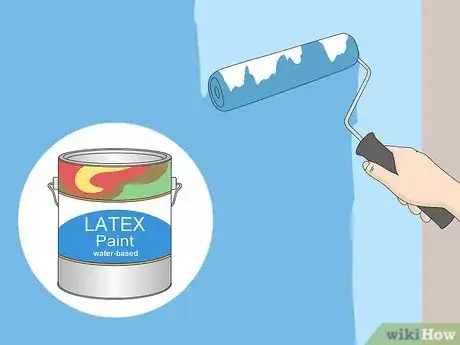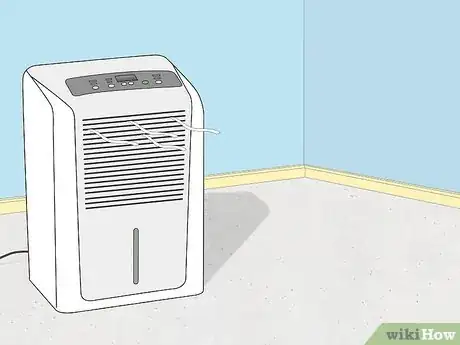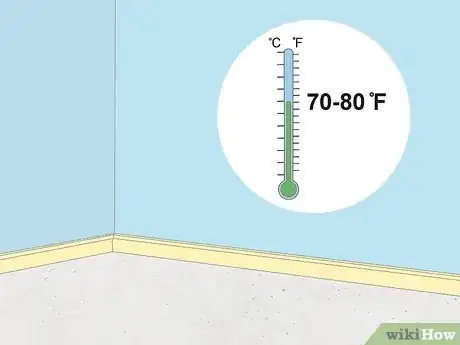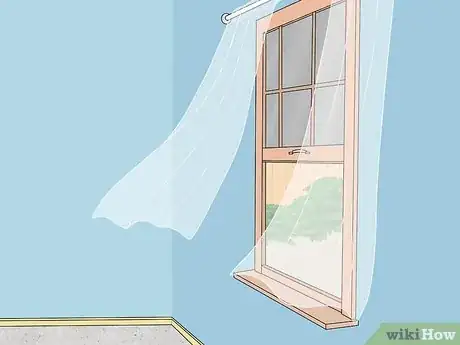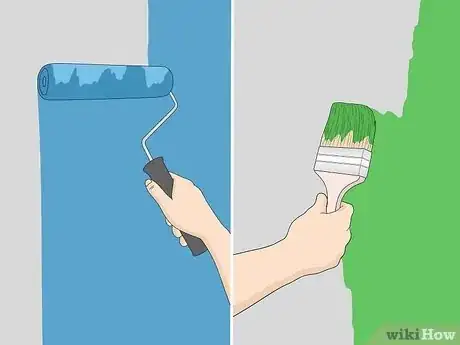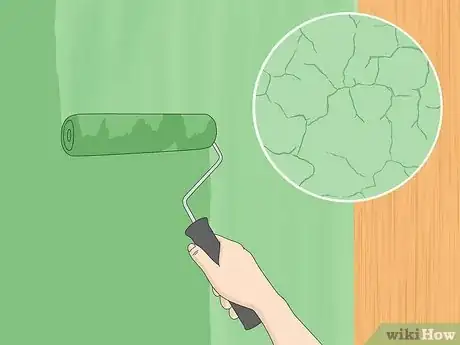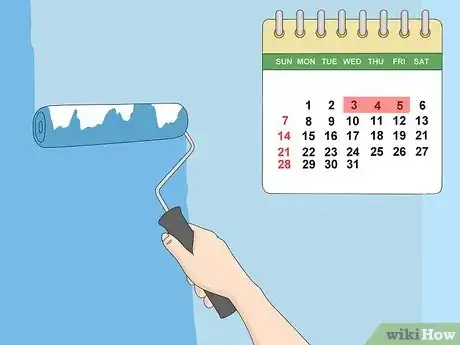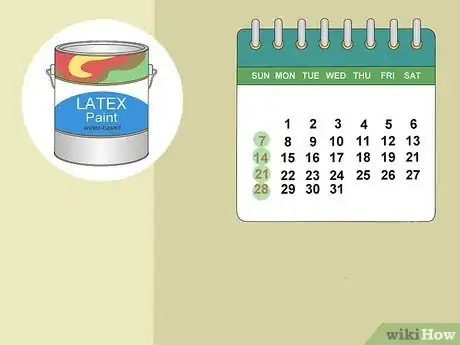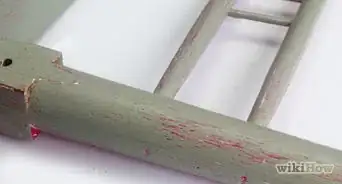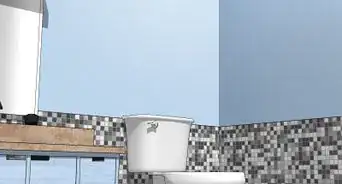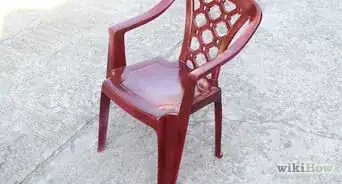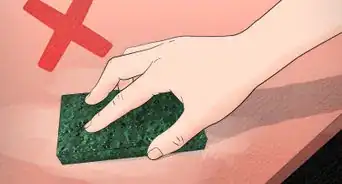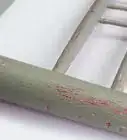This article was co-authored by wikiHow staff writer, Hunter Rising. Hunter Rising is a wikiHow Staff Writer based in Los Angeles. He has more than three years of experience writing for and working with wikiHow. Hunter holds a BFA in Entertainment Design from the University of Wisconsin - Stout and a Minor in English Writing.
There are 17 references cited in this article, which can be found at the bottom of the page.
This article has been viewed 2,937 times.
Learn more...
You finally got that new color up on the wall, but now you’re sitting and watching the paint dry. Would it really be that bad to put on a second coat right away? Yes it would, and here’s why. Even though paint can feel dry to the touch after an hour or so, it can take at least 3 hours for latex paint or up to a full day for oil paints before you can recoat or touch them up. There are a few other factors that can add onto how long you wait, so keep reading to find out everything you need to know before putting on another coat.
Things You Should Know
- Wait between 2–4 hours for water-based latex paints before putting on another coat. Give oil-based paint 24 hours before you apply a second coat.
- Paint will usually dry to the touch within 1–2 hours, but wait the full recoat time before you add a second coat.
- High humidity, low temperatures, and poor ventilation can all increase drying time.
- If you’re not sure that your paint is ready for a recoat, always err on the side of caution and wait another 24 hours or so.
Steps
How long should paint cure after the last coat?
-
1Leave latex paint for about 4 weeks to fully cure after applying it. Curing is when the paint completely hardens so it’s even more protected from damage or regular wear and tear. Avoid scrubbing any painted surfaces and be careful not to scuff up the paint while it’s still hardening. After about 4 weeks, your paint will have fully bonded and is less likely to get damaged.[17]
-
2Let oil-based paint cure for 7 days. Even though oil paint has a longer time in between coats, it actually cures a bit faster than latex paint. Just be careful not to brush up against or scrub at the paint until it’s gone through its full cure time.[18]
- Always double-check the cure time on the paint packaging since it may recommend a longer time.
References
- ↑ https://images.homedepot-static.com/catalog/pdfImages/a3/a3051f4a-65b6-4cdc-972f-c300fe4ddc93.pdf
- ↑ https://www.kilz.com/binaries/content/assets/magnolia/pdf/tds/tds-premiuim-interior-matte-paint.pdf
- ↑ https://media.benjaminmoore.com/WebServices/prod/assets/stage/datasheets/TDS_0513/20180710%20513%20TDS%20US%20OKF.pdf
- ↑ https://images.thdstatic.com/catalog/pdfImages/4a/4ab3302a-d3c0-4b9d-8b4f-89084f22e3d0.pdf
- ↑ https://www.homedepot.com/hdus/en_US/DTCCOM/HomePage/Know_How/Brand_Pages/Paint/Behr/Docs/ExteriorPPUPaints.pdf
- ↑ https://www.rustoleum.com/~/media/DigitalEncyclopedia/Documents/RustoleumUSA/TDS/English/CBG/Specialty/SPC-18_Specialty_Chalkboard_Paint_TDS.ashx
- ↑ https://media.benjaminmoore.com/WebServices/prod/assets/stage/datasheets/TDS_0508/20200210%20508%20TDS%20US%20OKF.pdf
- ↑ https://www.thisoldhouse.com/painting/21017918/interior-paint-buying-guide
- ↑ https://assets.unilogcorp.com/187/ITEM/DOC/Majic_Paints_100006692_Specification_Sheet.pdf
- ↑ https://media.benjaminmoore.com/WebServices/prod/assets/stage/datasheets/TDS_0793/20190124%20K793%20TDS%20CE%20OKF.pdf
- ↑ https://images.thdstatic.com/catalog/pdfImages/1d/1d30a987-1b6c-47fb-8876-0fbd95d6be3c.pdf
- ↑ https://media.benjaminmoore.com/WebServices/prod/assets/stage/datasheets/TDS_0793/20190124%20K793%20TDS%20CE%20OKF.pdf
- ↑ https://www.kilz.com/binaries/content/assets/magnolia/pdf/tds/tds-premiuim-interior-matte-paint.pdf
- ↑ https://www.bobvila.com/articles/how-long-does-it-take-paint-to-dry/
- ↑ https://www.bobvila.com/articles/bubbling-paint/
- ↑ https://wilkopaintinc.com/wp-content/files/2015/03/342.46-TDS.pdf
- ↑ https://www.kilz.com/binaries/content/assets/magnolia/pdf/tds/tds-premiuim-interior-matte-paint.pdf
- ↑ https://www.rustoleum.com/~/media/DigitalEncyclopedia/Documents/RustoleumUSA/TDS/English/CBG/Zinsser/CVS-03_Cover-Stain_Oil-Based_Primer_TDS.ashx
- ↑ https://www.bobvila.com/slideshow/the-13-painting-mistakes-almost-everyone-makes-48420
- ↑ https://www.kilz.com/binaries/content/assets/kilz/pdf/msds/masonry_stucco_brick_paint_ce_tds.pdf
